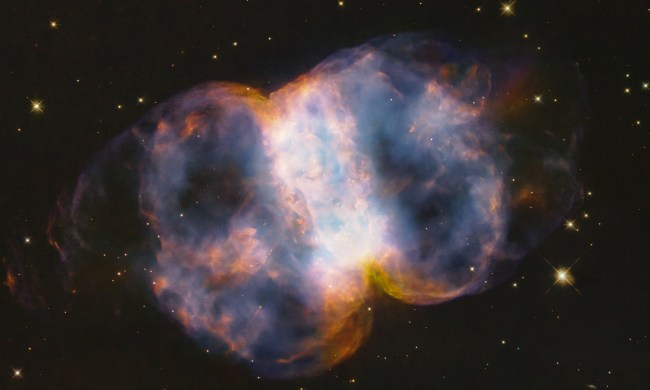Researchers using the Hubble Space Telescope are getting into the festive spirit with a holiday image showing a dwarf irregular galaxy called UGC 8091. Located 7 million light-years away in the constellation of Virgo, this region is a hotbed of star formation, with bright young stars illuminating the gas around them to create a sparkling mass reminiscent of Christmas lights.
It is designated an irregular galaxy because of its nonuniform shape, and a dwarf galaxy because of its small size. Unlike spiral galaxies, such as our Milky Way, or elliptical galaxies, which are smooth and have a elliptical shape, irregular galaxies can come in a variety of shapes. Often, these galaxies have been pulled into odd shapes due to gravitational forces, such as when two galaxies come close to each other and interact.

This particular image was taken using Hubble’s two cameras, the Wide Field Camera 3 and the Advanced Camera for Surveys, and combines data taken over many years. Hubble’s instruments primarily look in the visible light wavelength, like the human eye, but they can also look in a small portion of the ultraviolet and infrared wavelengths.
Now, astronomers who wish to investigate objects in the infrared portion of the spectrum have the option of using the James Webb Space Telescope, which has three instruments that operate in the near-infrared and one that operates in the mid-infrared. But Hubble remains one of the premier tools of astronomy for visible light observations.
At over 30 years old, Hubble has experienced a variety of hardware errors in its time, including a recent issue with one of its gyros going down, but it continues to operate and provide data for projects like this one, which Hubble scientists say, “sought to investigate the role that dwarf galaxies many billions of years ago had in reheating the hydrogen that had cooled as the universe expanded after the big bang.”



